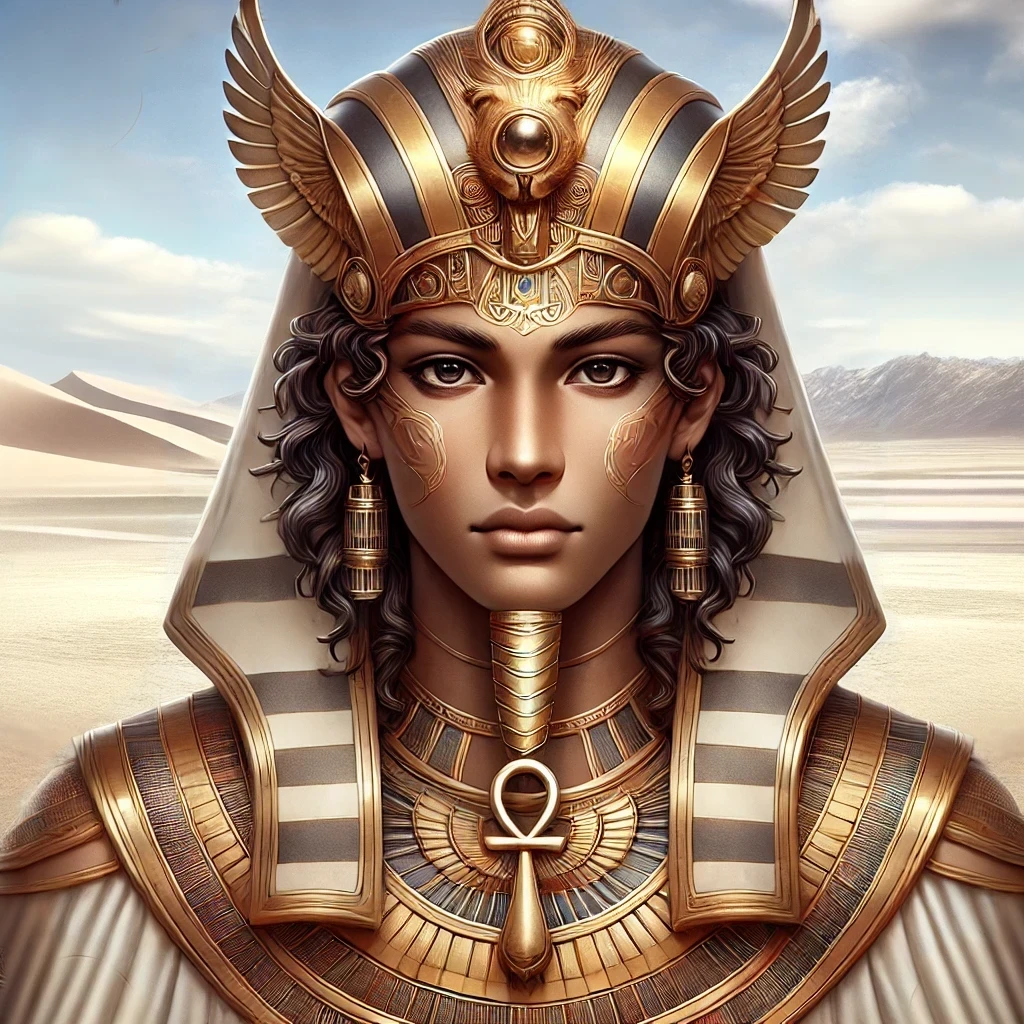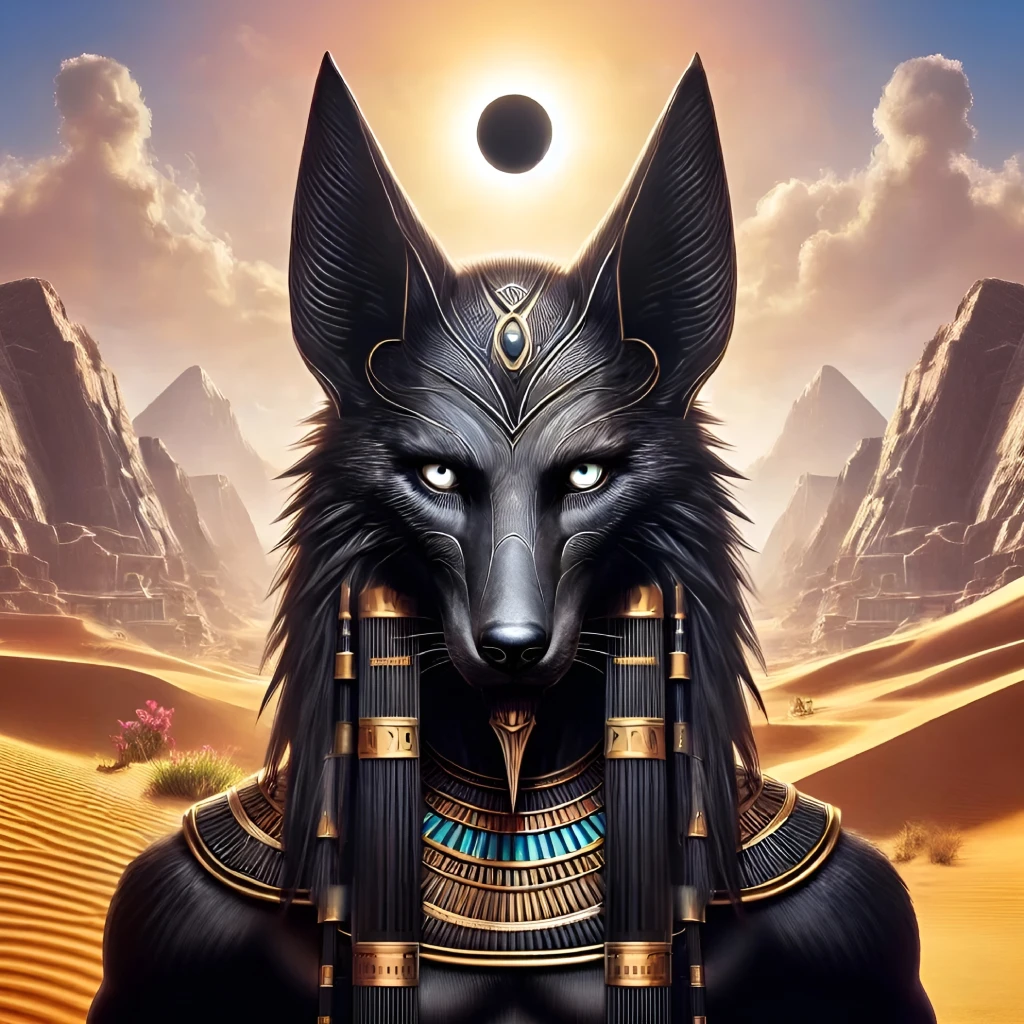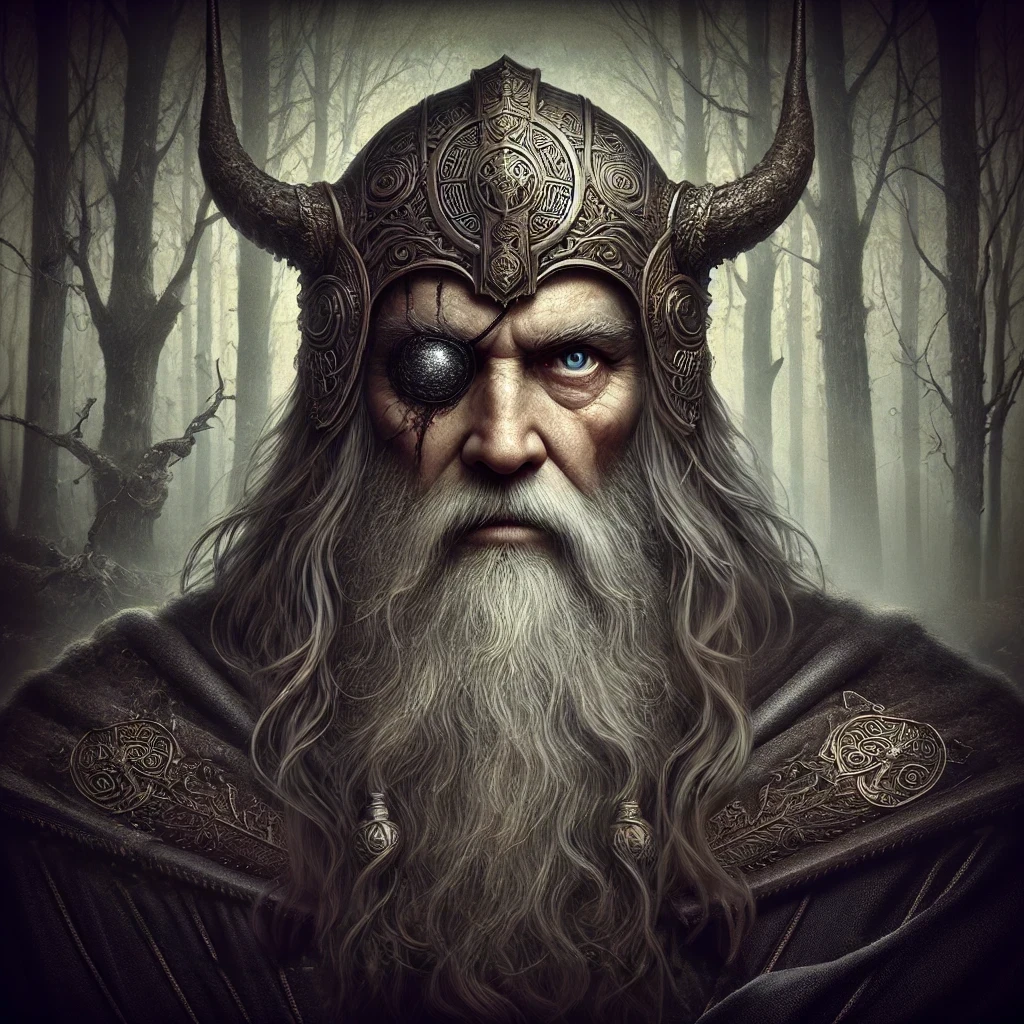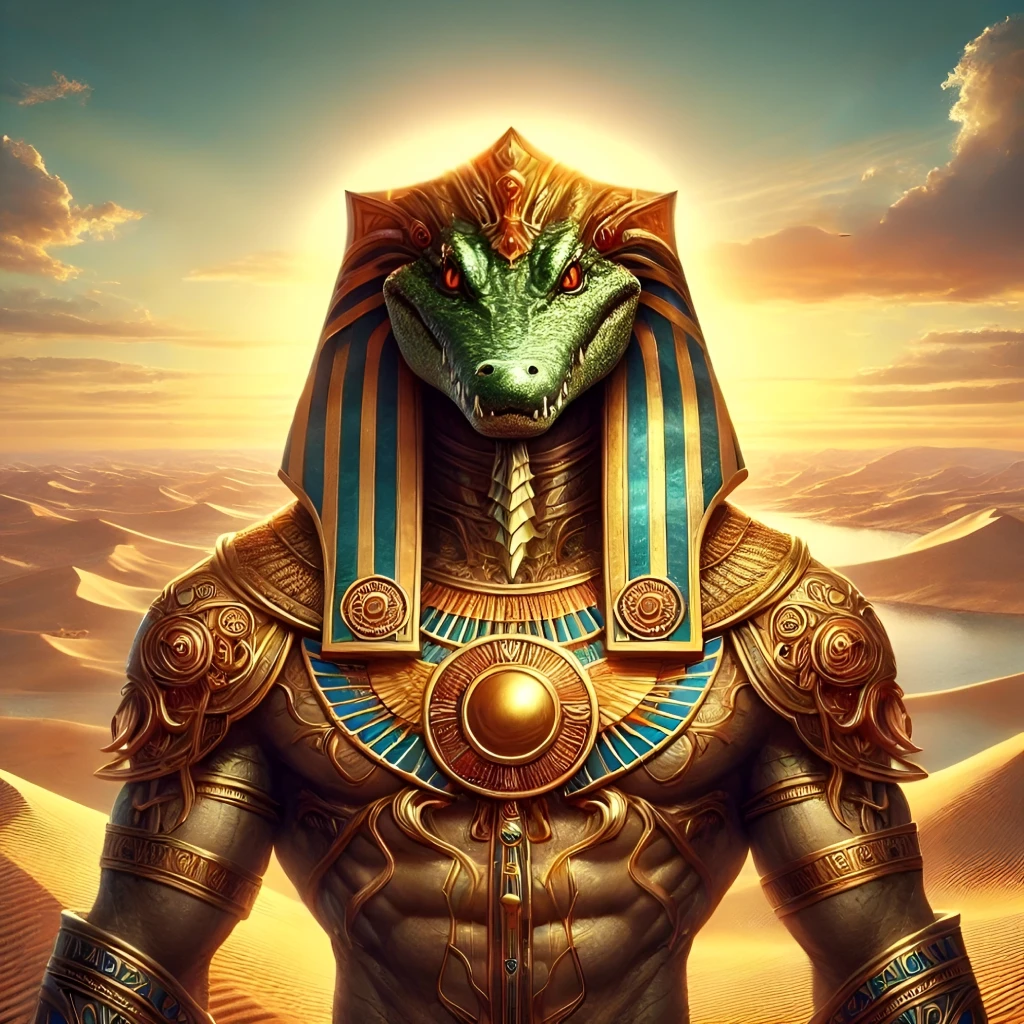Shu, known as the god of air and the personification of life’s vital breath, his name translates to “emptiness” or “he who rises up.” Often referred to as the “Bearer of the Sky,” he was a foundational figure in Egyptian cosmogony, maintaining the balance between the heavens and the earth.
Origins
Historical Roots
Shu’s origins can be traced to the Heliopolitan Ennead, a grouping of nine key deities in Egyptian mythology. He emerged as a direct creation of Atum, the sun god, who birthed him through spitting or exhaling, symbolizing the breath of life. In this role, he bridged the gap between the material and spiritual worlds, embodying the essential air that sustains all living beings.
Role in Creation
In creation myths, he separated the sky goddess Nut from the earth god Geb, thereby establishing the order of the cosmos. His actions prevented chaos by ensuring the heavens remained above and the earth below, a theme deeply embedded in Egyptian cosmology.
Appearance
Physical Depictions
Shu was commonly depicted as a man adorned with an ostrich feather on his head, symbolizing air and lightness. Sometimes, he appears with both arms raised, holding aloft the sky goddess Nut to signify his role as the “Sky Supporter.”
Variations in Art
In some artistic renditions, he is portrayed alongside his sister-consort, Tefnut, or as a lion-headed figure, emphasizing his strength and protective nature. These depictions varied across different regions and periods but consistently highlighted his association with balance and life.
Abilities
Powers and Attributes
The deity’s primary power lay in his dominion over air and light. By governing the winds, Shu controlled the elements essential for life and agriculture in ancient Egypt. His influence extended to the dispersal of chaos and the purification of the environment.
Role in Protection
As a protector, he stood as a barrier against malevolent forces. He was invoked to safeguard the deceased on their journey through the afterlife, ensuring a safe passage to the realm of Osiris.
Myths
The Separation of Nut and Geb
One of the most famous myths involving this ancient figure is his act of separating Nut and Geb. This story symbolizes the establishment of cosmic order, with Shu standing between the two to maintain the natural balance of the universe.
The Eye of Ra
Another notable tale links him to the Eye of Ra. In this myth, Shu and his sister Tefnut embark on a journey to retrieve the eye, a symbol of divine power and protection, after it wanders from Ra. Their return brings harmony and stability to the gods.
Symbolism
Objects and Symbols
The ostrich feather is Shu’s most recognized symbol, representing air, truth, and order. Additionally, his connection to sunlight links him to the solar disk and the morning breeze, reinforcing his association with vitality.
Associated Animals
Lions were occasionally linked to him, emphasizing his protective and authoritative aspects. This connection underscores his role as a guardian deity.
Plants and Minerals
Airy and light plants, such as reeds, were often connected to Shu in artistic and ritual contexts. No specific minerals are directly associated with him, but the concept of weightlessness in gemstones may reflect his airy domain.
Relationships
Family Connections
Shu’s family ties place him within the core of Egyptian theology. He was the son of Atum, the brother and consort of Tefnut, and the father of Nut and Geb. These connections positioned him as a pivotal figure in maintaining harmony within the divine family.
Rivals and Conflicts
His stories rarely involve outright rivals, but his role as the mediator between Nut and Geb situates him as a figure of resolution rather than conflict. However, his responsibility to maintain cosmic balance occasionally pits him against forces of chaos.
Trivia
- Shu was one of the earliest gods depicted in Egyptian art, appearing as early as the Old Kingdom period.
- His role as the “Bearer of the Sky” made him a symbol of resilience and steadfastness in Egyptian culture.
- In funerary texts, he was invoked to provide fresh air to the deceased in their tombs, ensuring a comfortable afterlife.
- His association with sunlight tied him to the daily rebirth of the sun, a cornerstone of Egyptian religious thought.
- His lion-headed depictions are among the rarest but signify his dual nature as a gentle protector and fierce guardian.



